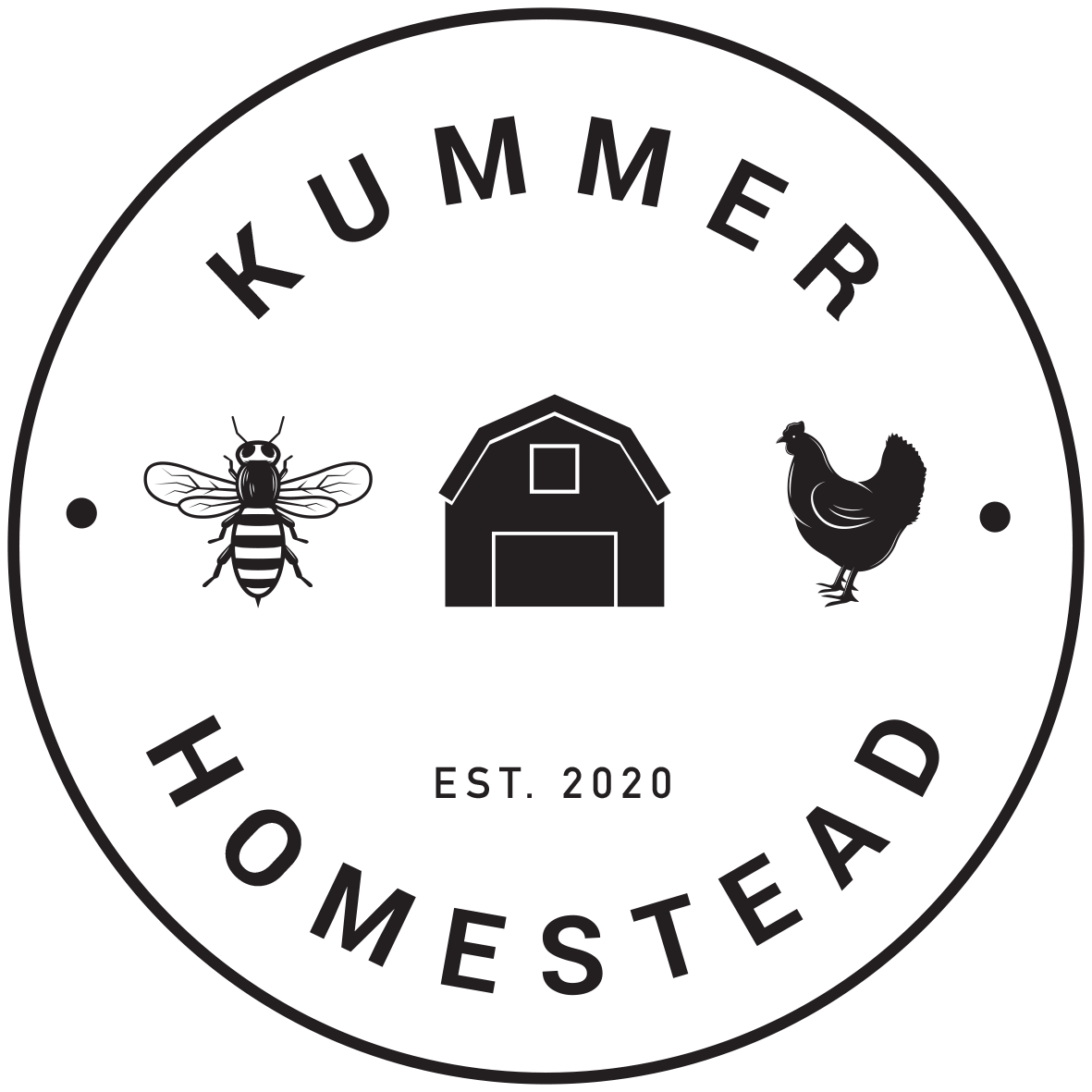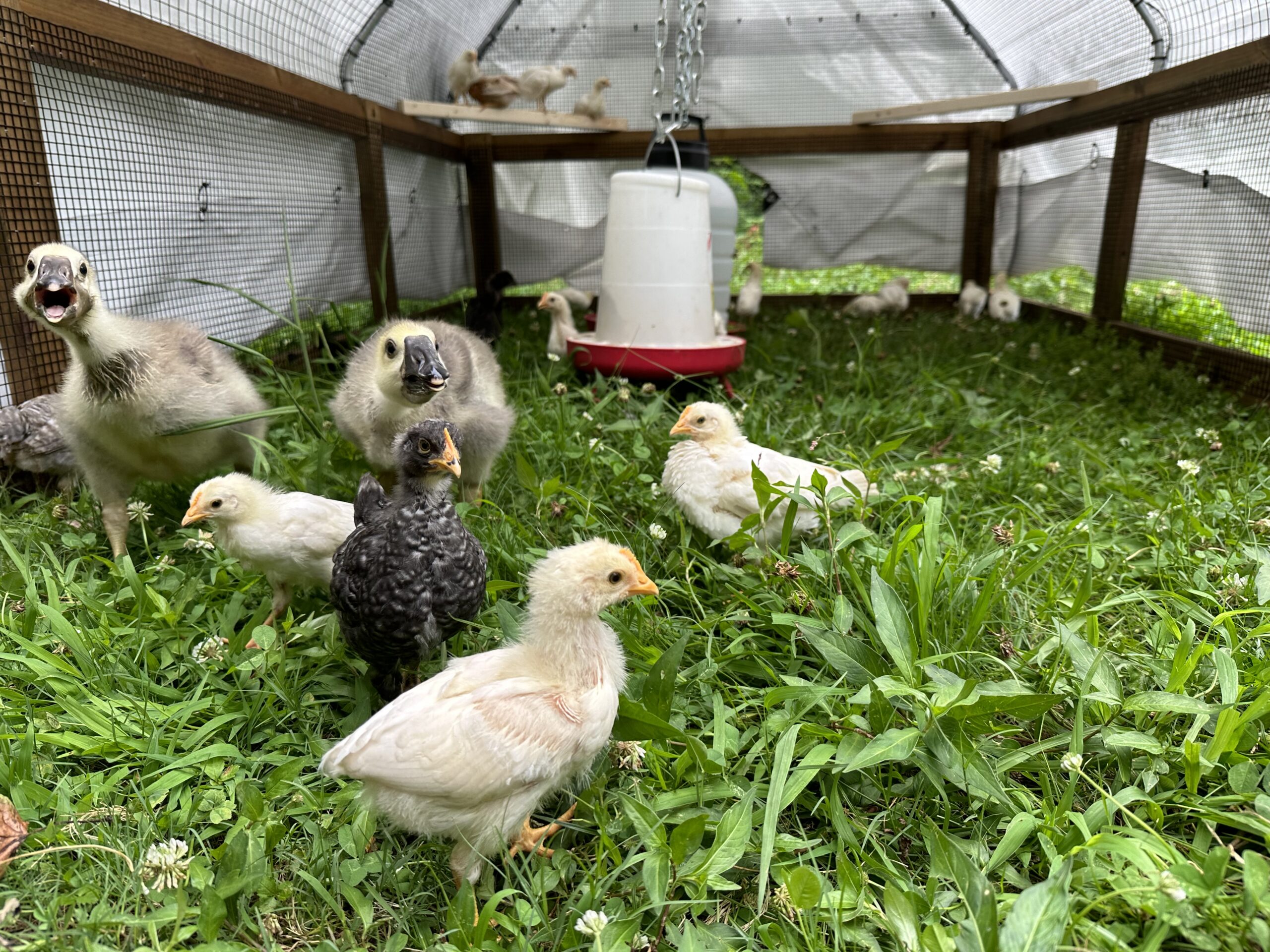When our hens turned three years old, their egg production declined dramatically. Pasture raised eggs are a main part of our diet, so we decided to replace them. Instead of relying on a rooster to protect the flock (our rooster at the time was quite mean and attacked anyone who ventured too close to his hens), we decided to get a pair of African geese from the local Tractor Supply store and raise them as guard geese.
What we didn’t know was whether we could raise the two goslings together with 25 chicks in the same brooder, considering the differences in size and feed requirements between the two types of birds.
After doing extensive research, we were relieved to learn that it is possible to raise chicks, ducklings and/or goslings in the same brooder — although there are several important factors that you need to consider before choosing to do so.
You can learn about our experience in the video above, or continue reading to learn more about the five most critical factors involved in raising different types of birds in the same brooder:
On a side note, our chicks and goslings are now nine weeks old and are happily living together on fresh pasture in our backyard.
Top 5 Factors for Raising Chicks, Ducklings and Goslings in the Same Brooder
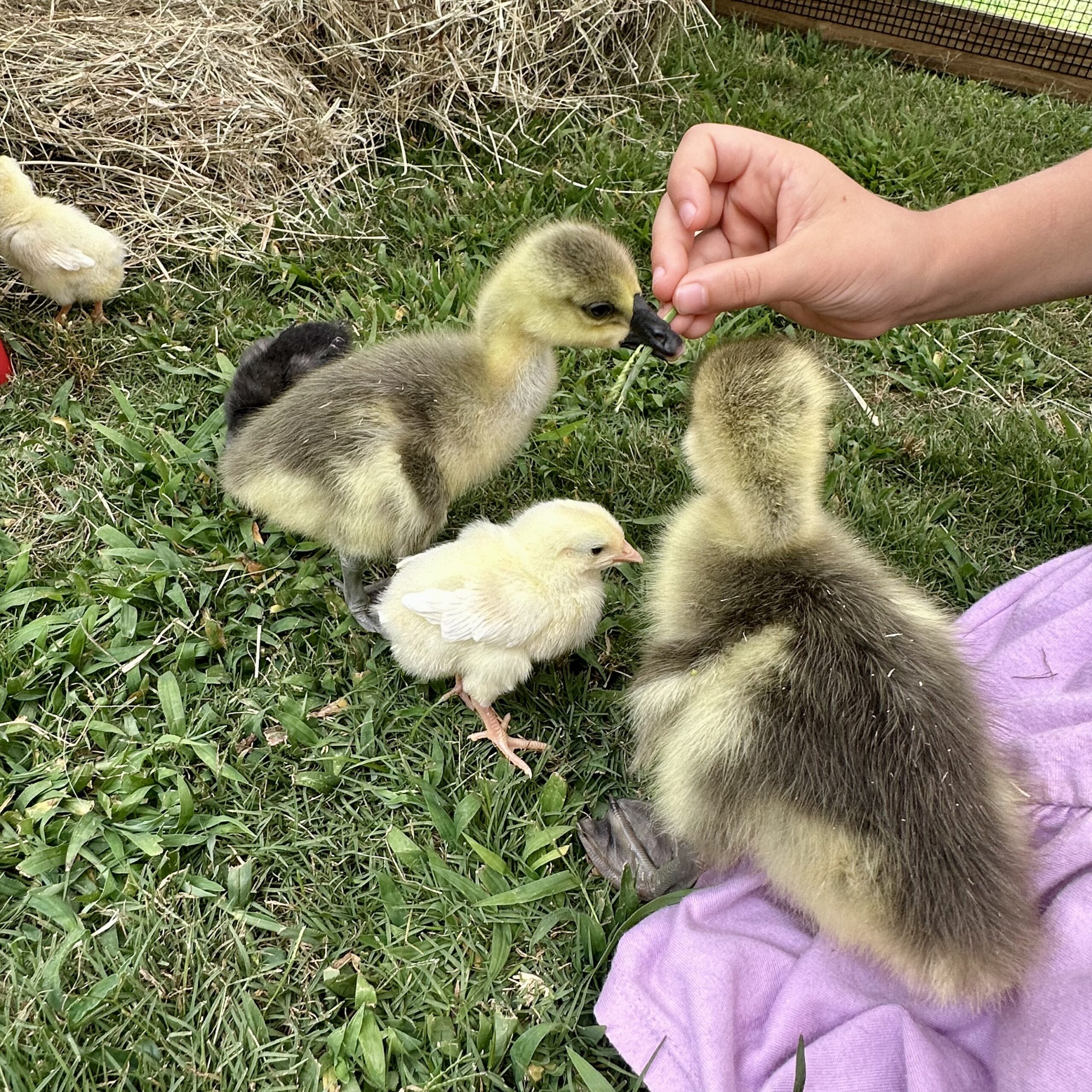
Raising chicks, ducklings and goslings in the same brooder is relatively straightforward, but the birds’ health needs to take the following factors into consideration.
Factor #1: Space Requirements
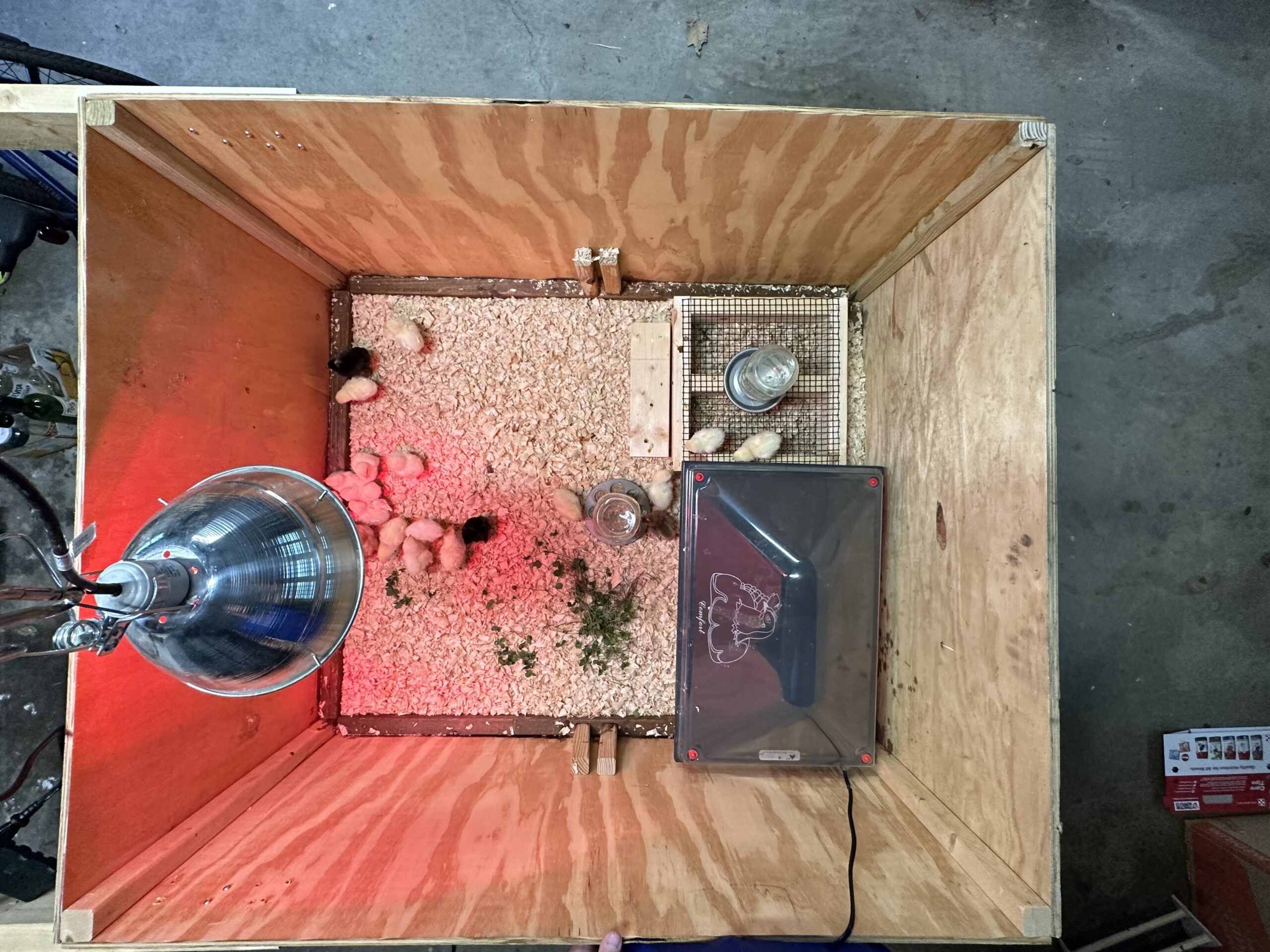
Baby chicks need approximately 0.5 to 1.0 square feet of brooder space during the first six weeks of their lives. The exact space requirement depends on how many chicks you’re raising, as well as how long you intend to keep them in the brooder.
A general rule is that the smaller your flock is, the more square feet you want to give it.
For example, we wouldn’t keep two chicks in one square foot of space, but keeping 25 birds in a 12-square-foot brooder is likely not an issue. Our brooder offers 14 square feet of space, which is enough for 25 baby chicks and two goslings.
The second factor determining square footage is how long you intend to keep the birds in the brooder. We moved our flock into a 60-square-foot mobile chicken tractor when they were three weeks old.
Ducklings and goslings are much larger than chicks and often grow faster. So, depending on how many of those larger breeds you intend to keep with your chicks, you must provide up to three square feet of brooder space per duckling and gosling (especially if you intend to keep them in the brooder for several weeks).
Factor #2: Bullying
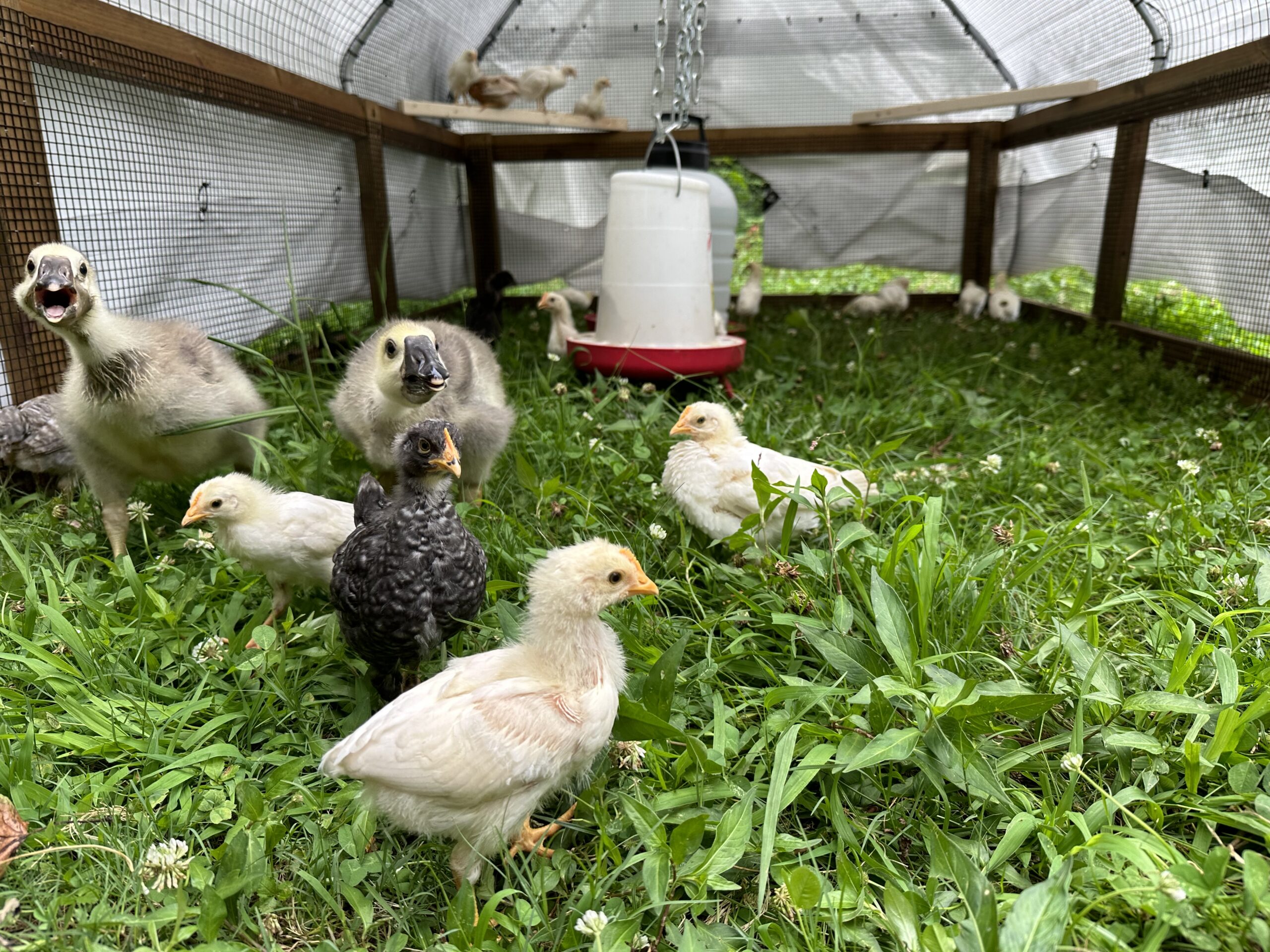
Most types of poultry (including backyard chickens, ducks and geese) have a pecking order, and it’s not uncommon to see some bullying while that pecking order is being established during the early days in the brooder.
While chickens are the most notorious bullies, their smaller size than ducklings and goslings means they might end up lower in the pecking order of a mixed flock, and there is a risk of chicks getting injured or run over by the larger and heavier ducklings or goslings.
We observed some pecking and nipping by one of our goslings on the first day in the brooder. After that, they didn’t bother each other, and our brooder was large enough so the chicks could always get away if needed.
The second issue with mixing larger and smaller breeds is that the chicks might accidentally get run over by the ducklings or goslings, which can be clumsier than their smaller cousins. We observed that a few times, but none of the chicks got harmed, and they quickly learned not to be in the ducklings’ way.
Factor #3: Waterer and Feeder
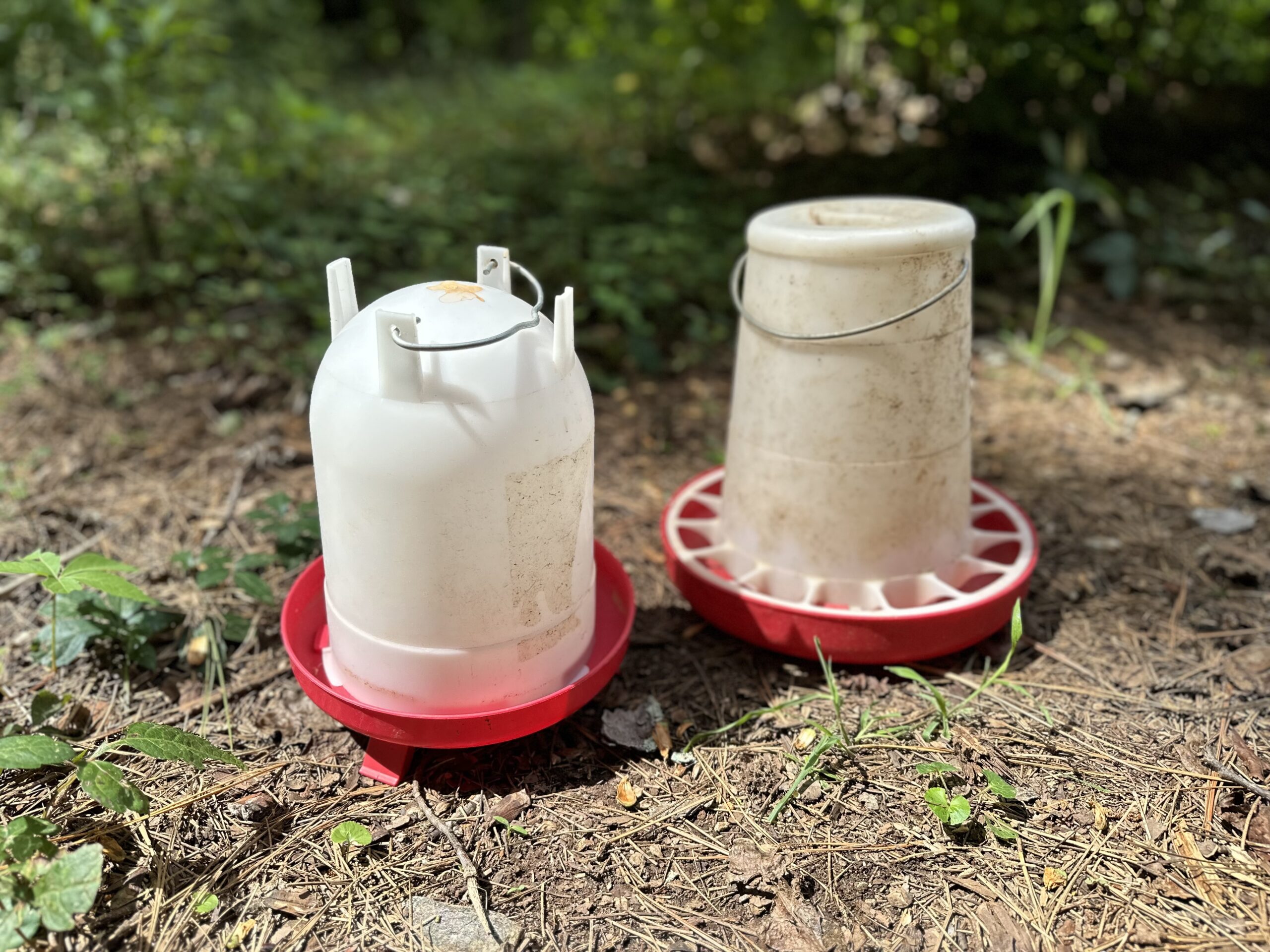
While you can use the same starter feed for most types of poultry, you should know that geese thrive on pasture and don’t need much supplemental feed if given access to high-quality land. That’s one of the reasons why we moved our chicks and goslings to pasture when they turned three weeks old — because doing so saved us a lot of money.
Note: We use organic, soy-free and corn-free chick feed from Modesto Milling sold by Chewy.
Regarding water, it’s essential to understand that chicks consume water differently than birds with a bill (e.g., ducks and geese).
Chicks have no trouble drinking water from either a bowl or a nipple with their pointy beaks, while goslings and ducklings prefer a bowl because it helps them keep their bill and nostrils clean and free of debris. Plus, a duckling’s or gosling’s bill is larger than a chick’s beak, making it challenging for larger birds to drink out of small chick waterers.
That’s why we used a duck waterer in the brooder that both the chicks and goslings are happy with.
It’s also worth noting that ducklings (and, to a lesser degree, goslings) can be pretty messy as they splash and spill water. So ensure you keep the area around the waterer dry by frequently adding or replacing pine shavings. Our goslings weren’t messy and stayed in the brooder for only three weeks, which kept our maintenance requirements to a minimum.
Factor #4: Heat Source
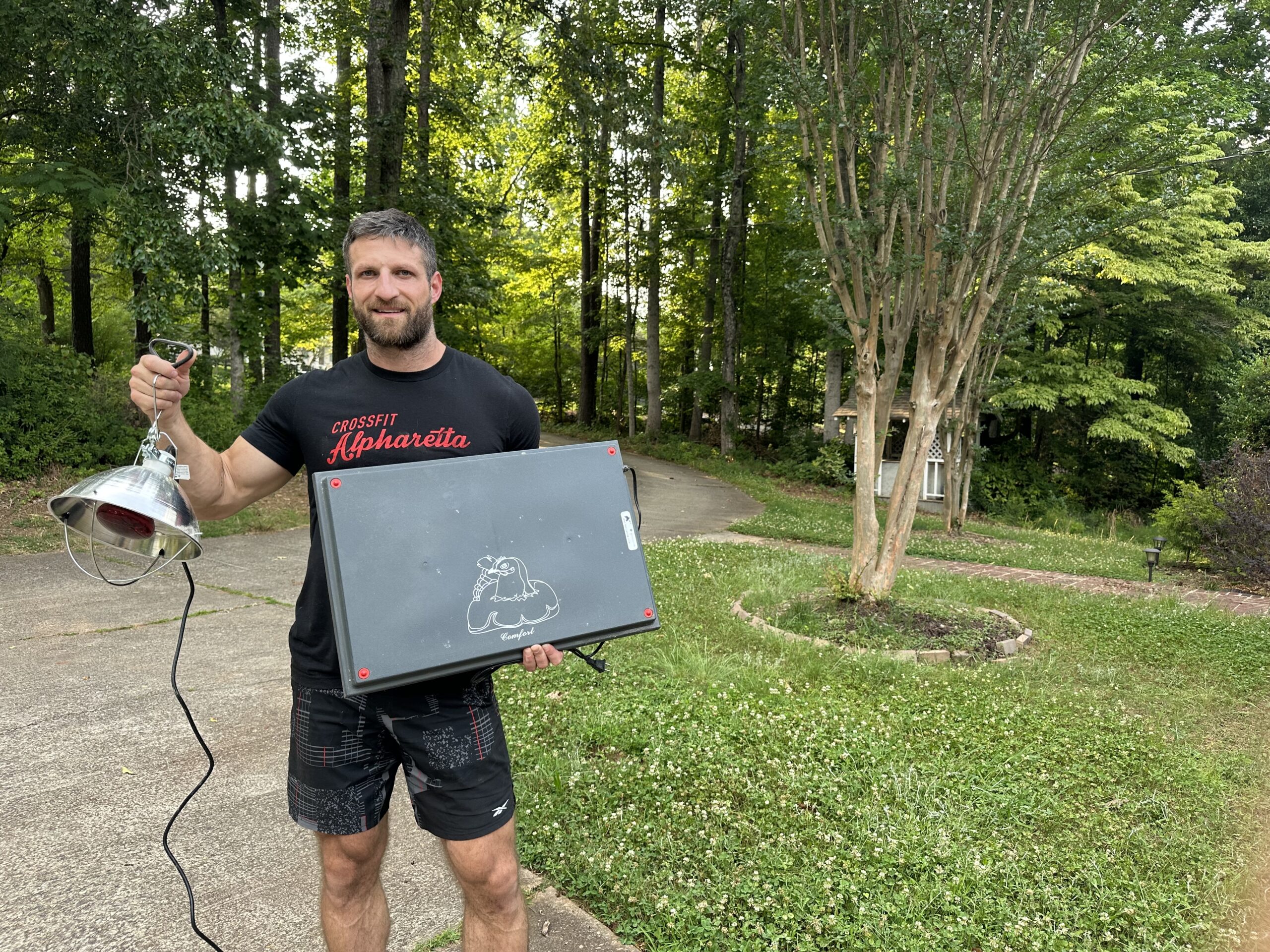
The two most common brooder heat sources include heat lamps and heating plates.
While both heat sources can work well for a mixed flock, including chicks, ducklings and goslings, you have to take the difference in the size of those birds into account. For example, we like to use heating plates because of their reduced fire hazard, but we had to keep them positioned higher off the ground than we normally would have in order to accommodate the (larger) goslings.
Since we had 25 chicks and two goslings in the same brooder, they were able to maintain their body temperature by keeping each other warm — despite the fact that we had the heating plate positioned higher than we normally would for a flock of just chicks.
If you have a small flock (e.g., 2-6 chicks), you might want to invest in a heating plate that allows you to adjust all four legs individually. That way, you can set up the heating plate at an angle where the back of the plate is closer to the ground than the front.
Alternatively, you could use a heat lamp, which tends to create a more inconsistent heat distribution; this allows the birds to find the most comfortable spot themselves.
Factor #5: Waste Management
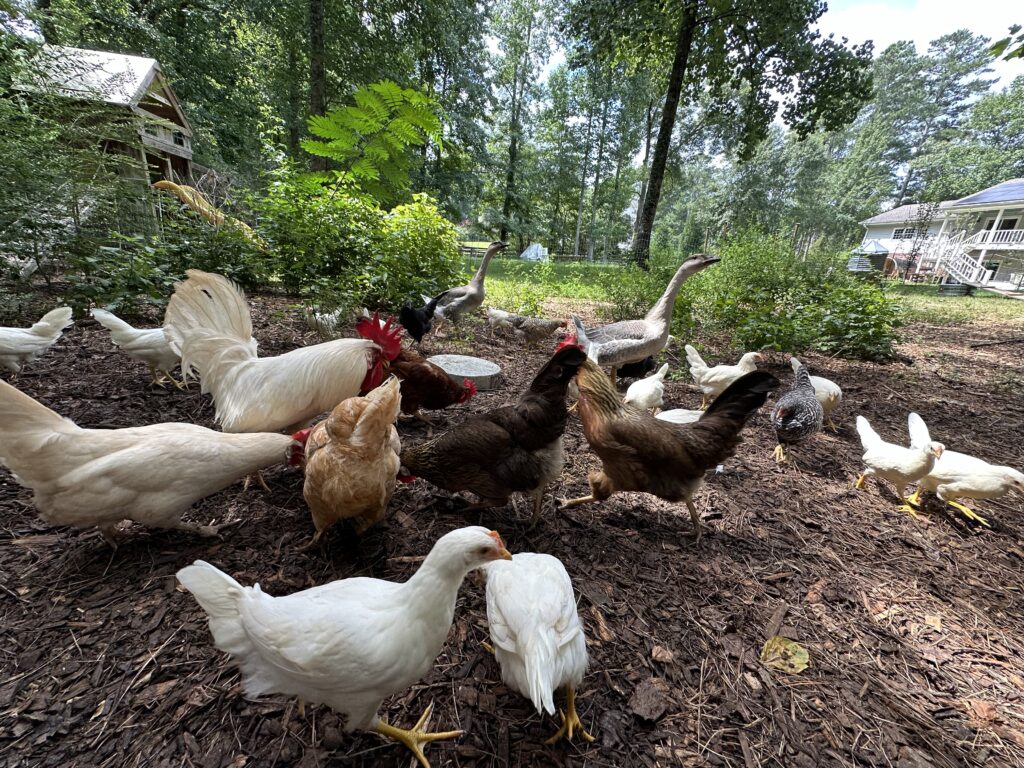
The bigger the birds, the more waste they produce. During the first few weeks of their lives, our two goslings produced as much manure as all 25 chicks combined. Depending on how many large birds you have in your flock, you’ll need to replace the pine shavings fairly often.
We realized just how much manure goslings produce when we moved the flock from the brooder to a mobile chicken tractor (without a floor). The idea of the chicken tractor is to give our birds access to fresh pasture and fertilize the lawn in one fell swoop. With only chicks, we’d move the tractor to a fresh spot once a day. But with the two goslings and the incredible amount of poop they produce, we had to move them twice a day.
Frequently Asked Questions
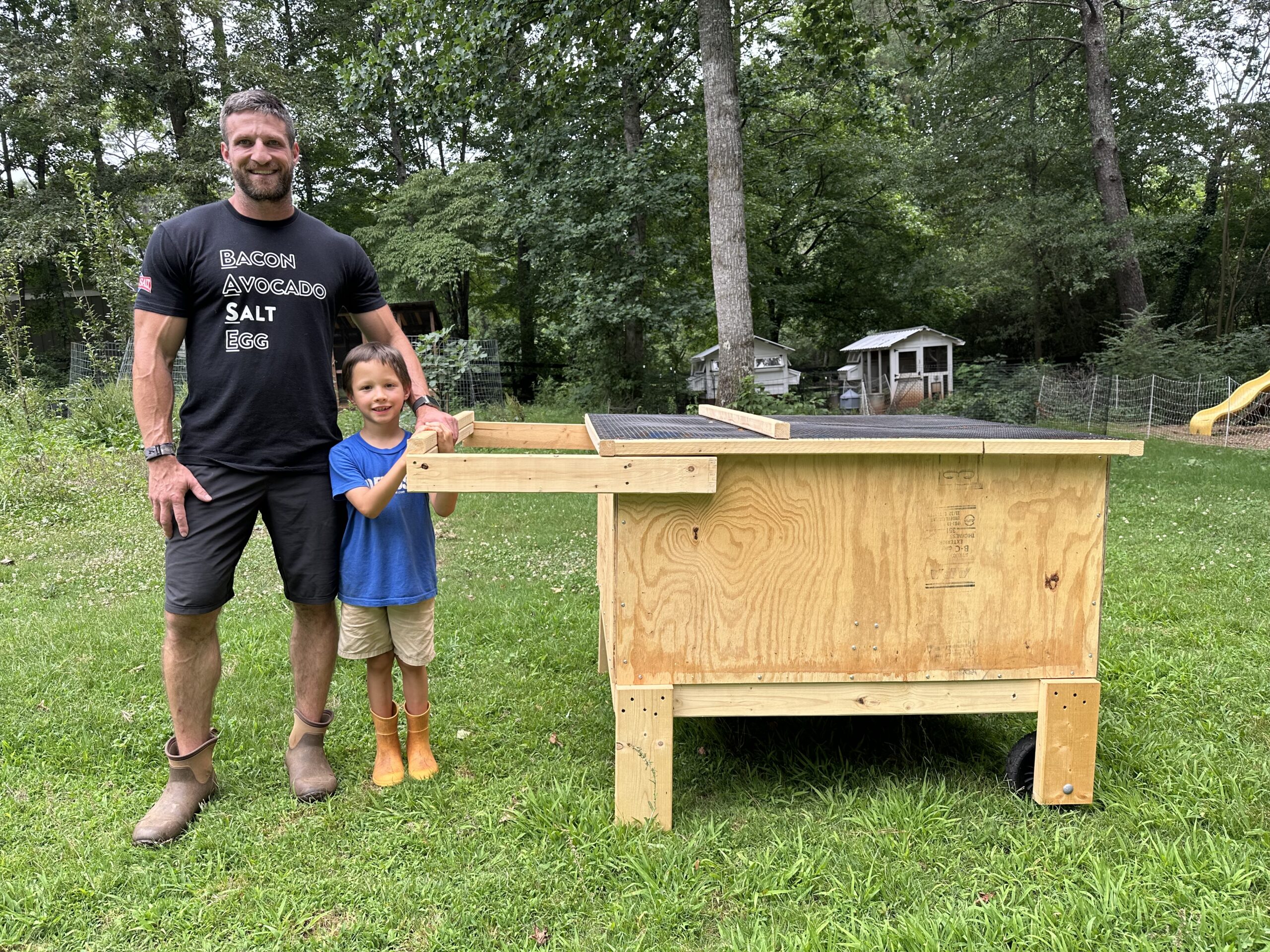
The purpose of a brooder is to provide a safe and warm space for your birds. Most people keep their young birds in the brooder for six weeks. We got our birds in late spring/early summer, and were able to move them into a mobile chicken tractor after three weeks. We put the heating plate into the tractor but noticed the birds weren’t using it overnight. So evidently, they were warm enough. Of course, our chicken tractor is predator-proof to keep rats, snakes and raccoons out.
Baby ducks and goslings can eat regular chick starter feed, so you don’t have to worry about feeding them separately. We also recommend providing your ducklings and goslings fresh greens (weeds are great) every day because they love it, which cuts down on feed costs. We recommend the organic starter chick feed from Modesto Milling.
All types of poultry have a natural pecking order, so it’s perfectly normal to see some bullying as the flock establishes its internal ranking system. If you feel the bullying is getting out of hand or if birds are getting injured, we recommend adding a temporary barrier between your larger and smaller birds. Mesh wire is ideal because it allows your birds to see but not bully each other. That way, you won’t need a separate brooder for your birds.
Both baby ducklings and goslings are waterfowl and will eventually appreciate a water source to bathe and clean their feathers in. You don’t have to worry about that during the first few weeks of their lives, and we don’t recommend adding a large water bowl to the brooder (to prevent a big mess and your chicks from drowning).
However, once we moved our chicks and goslings to the mobile chicken tractor, we offered them a container filled with water once a day and they seemed to like it. As they age, you can use a kiddie pool or livestock water tank if you don’t have a pond your birds can access.
Summary: Yes, You Can Raise Chicks, Ducklings and/or Goslings In The Same Brooder!
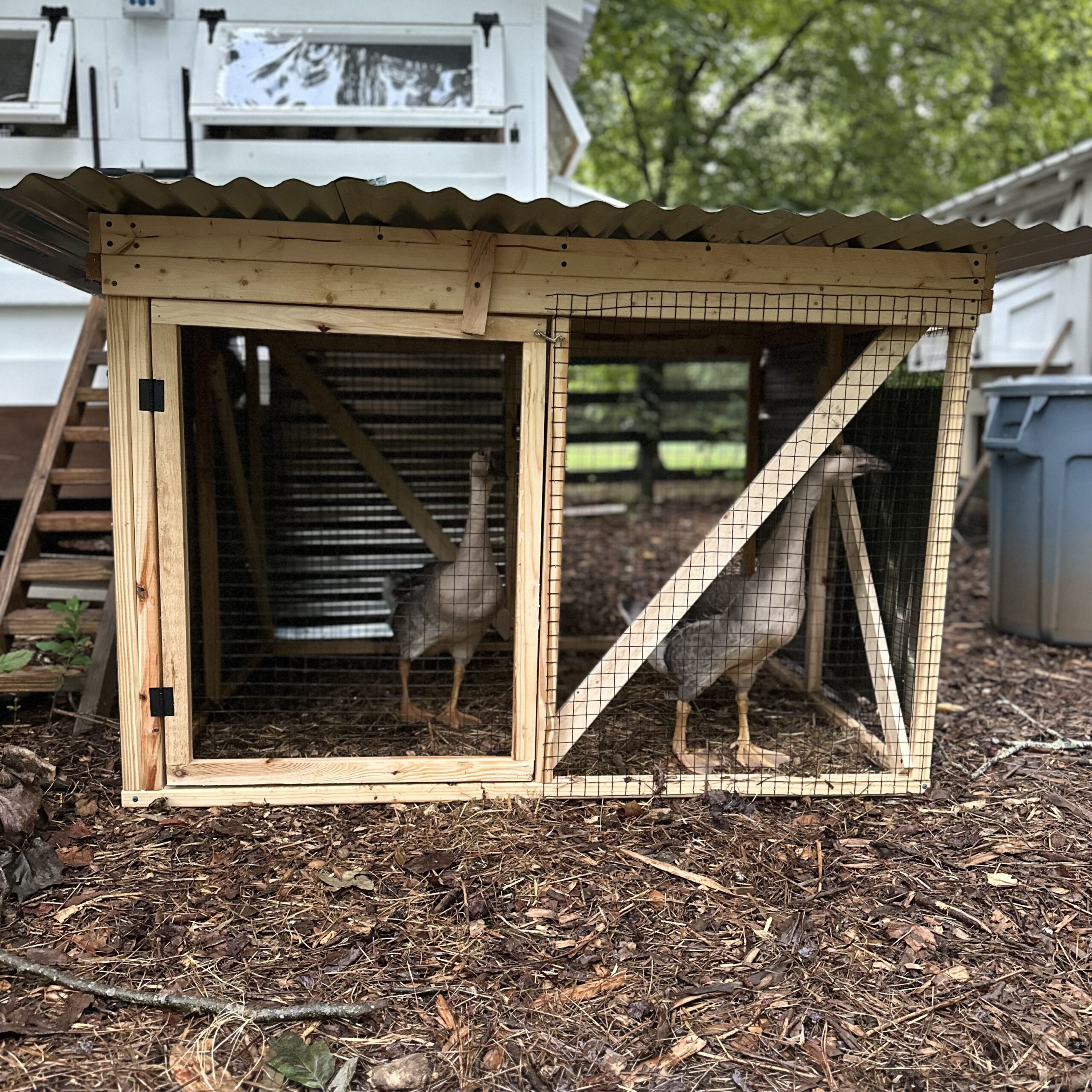
Raising chickens, ducks and geese in the same brooder is relatively straightforward if you consider the factors outlined in this article. It was fun to watch our goslings and chicks huddle up at night to keep each other warm, and to observe how they interact.
Now that they’re older (our goslings have almost fully feathered out), it’s great to see how they all stick together and how the geese have assumed a protective duty to keep predators at bay.
And since we appear to have mastered raising chicks and goslings in a mixed flock, we might try a couple of ducks next time!
If you have any questions about how we raise chicks, geese or any of the other livestock on our homestead, don’t hesitate to reach out or leave us a comment below.
